For Porsche purists, the arrival of the Cayenne SUV in the early noughties was a knife to the heart. Jaws dropped and minds blew at the thought of the brand’s famous crest being applied to the nose of a high-riding family truckster.
But before the decade’s end, with the Cayenne’s success filling the coffers in Zuffenhausen, Porsche twisted the blade further with the addition of the five-door, four-seat, front-engined Panamera.
Although Porsche had previously toyed with the idea of a four-door sports/GT mash-up, this was for real; the idea being to push the brand’s performance reputation into the ‘executive’ space, and trim some Audi A8, BMW 7 Series and Merc S-Class grass.
To rub salt into that Porscheophile chest wound, the Panamera has fulfilled its brief, splintering into an ever-increasing range of niche variants, and last year evolving into a sleek, second-generation version.
And just when old-school 911 diehards thought it couldn’t get any weirder, the Panamera E-Hybrid arrived to turn their upside-down worlds inside-out.
In the model we’re looking at here, the Panamera 4 E-Hybrid, a 2.9-litre twin-turbo V6 petrol engine (in the nose), is supported by an electric motor (just behind it), which, according to Porsche, mimics the hybrid set-up used in its 918 Spyder hypercar.
You can't beat a lofty comparison. But is it a case of legitimate tech sharing for maximum efficiency and performance, or is it, in fact, just too big a stretch for a thumping, 2.2-tonne sports limo? Read on to find out.
Porsche Panamera 2018: 4 E-Hybrid
| Engine Type | Twin Turbo V6, 2.9L |
|---|---|
| Fuel Type | Premium Unleaded/Electric |
| Fuel Efficiency | 2.5L/100km (combined) |
| Seating | 4 |
| Price From | $121,880 - $140,140 |
Is there anything interesting about its design?
The first-generation Panamera’s famously awkward profile reflected then Porsche CEO, Wendelin Wiedeking’s demand that its rear seat should be able to accommodate his lanky frame.
Since then, saner (and presumably lower) heads have prevailed, with the sleeker, sportier second-gen version fitting more easily into the sleek and slick Porsche-design mould.
.jpg)
Hints of the iconic 911 abound, from the turret’s smooth curve towards the rear, to the distinctive tail-lights, recognisable headlights and familiar nose treatment.
Screaming green brake calipers reinforce the eco-friendly message, as does a green halo around the ‘Panamera 4’ badge on the tail, and ‘e-hybrid’ labels on the front doors.
Optional 21-inch ‘Panamera SportDesign’ wheels, finished in high-gloss black, ($9380) replace the standard 19-inch rims to give our test car a more menacing and purposeful look.
The interior-design theme is shaped by a similar set of traditional elements. including the iconic five-dial main instrument cluster (with tacho in the centre), chunky sports steering wheel, and chrono clock on the dashtop. The leather-trimmed sports seats (front and rear) feature a high, one-piece backrest, echoing those of Porsches past and present.
.jpg)
Not so familiar is the flight-deck-style dash, including a 12.3-inch high-res touchscreen media display, and maxi-size centre console housing touch-sensitive switchgear in place of Porsche’s usual array of knobs and buttons.
Rear-seat passengers are presented with an ultra-slick touchscreen display, integrated into the extended centre console, to manage their climate control, nav and media settings.
The optional ambient-lighting package ($990) fitted to our test car added a subtle green keyline glow to the door speaker surrounds front and rear.
Overall, the design manages to successfully combine slick luxury and comfort with clear sporting intent.
How practical is the space inside?
At just over 5m long, close to 2m wide, and a touch over 1.4m high, the Panamera is surprisingly close to the key dimensions of its traditionally supersized German competition - the Audi A8, BMW 7-Series, and Mercedes-Benz S-Class.
That said, its 2950mm wheelbase gives away a modest 42mm to the A8, a more substantial 85mm to the S-Class, and a lengthy 120mm to the 7 Series (all standard wheelbase versions). And this Porsche is strictly a four-seater, with elaborately sculpted and bolstered chairs for each occupant.
.jpg)
As you might expect, there’s plenty of room up front and generous storage space including a decent glove box, a lidded compartment between the seats, large door bins with space for bottles, and two cupholders (one jumbo, one regular) in the centre console.
In terms of power and ports there’s a 12-volt socket, USB plug (Apple CarPlay is standard), and an aux-in outlet.
The rear feels great, with ample head and legroom (for this 183cm tester), although getting in and out through a door aperture that tapers sharply towards the bottom is awkward. Not great for a car with limo aspirations.
A pair of longitudinally opening door lids in the centre console reveal a single cupholder and dual high-output USB power outlets. Our car also featured the ‘USB interface in rear’ option, at a measly $790!
A fold-down centre armrest opens to reveal a lined storage box, there are map pockets on the front seatbacks, and you’ll find bins (with bottle capacity) in the doors.
.jpg)
The back-seat section of the four-zone climate control system is run via the central touchscreen, with flashy knurled rollers to adjust temperature, and vents above the screen and in the back of the B-pillars to direct flow.
For an extra touch of luxury our test car featured an electric roller sunblind for the rear, and rear side windows ($2940).
The cargo compartment features four flip-up hooks to secure loads with a net or straps, a netted pocket on the passenger side, a 12-volt outlet and usefully bright lighting.
.jpg)
Boot space is 405 litres, enough to swallow our three-piece hard suitcase set (35, 68 and 105 litres) or the CarsGuide pram with room for soft bags to spare. The rear seat split-folds 60/40 to open up a whopping 1215 litres, and auto tailgate open/close is standard.
.jpg)
With no spare tyre; a repair kit is the only puncture option.
Does it represent good value for the price? What features does it come with?
When you’re asking a whisker less than a quarter of a million dollars for a luxury performance car, it’s fair to expect a a healthy standard equipment list, and the Panamera 4 E-Hybrid satisfies that requirement.
Included in the $242,600 recommended retail price (before on-road costs) is four-zone climate control, 14-way electrically adjustable and heated front seats (with memory), a two-piece panoramic sunroof, multi-function sports steering wheel, adaptive cruise control, sat nav, adaptive air suspension, auto rear hatch, 19-inch alloy wheels, LED headlights, daytime running lights, tail-lights and indicators, auto headlights, keyless entry and start, leather trim, leather steering wheel, park assist and parking distance control (front and rear), rear privacy glass, rain-sensing wipers, and sat-nav.
As well as the nav, ventilation, phone and vehicle set-up, the 12.3-inch touchscreen multimedia interface controls the standard Bose 710-watt, 14-speaker audio (which adapts audio settings to ambient noise levels) with digital radio and Apple CarPlay.
.jpg)
Our test car was also loaded up with around 20 grand worth of options; specifically the 21-inch ‘Panamera SportDesign’ alloy wheels in high-gloss black ($9380), electric roller sunblind for rear compartment and rear side windows ($2940), ‘LED-Matrix’ headlights including ‘Porsche Dynamic Light System Plus’ ($2690), front-seat ventilation ($2190), ‘Lane Change Assist’ ($1890), ambient lighting ($990), rear USB interface ($790), and ‘Power Steering Plus’ ($650), for a before on-roads total of $264,120.
The tester’s ‘Carrara White Metallic’ finish is one of only two no-cost paint options.
What are the key stats for the engine and transmission?
The Panamera 4 E-Hybrid is powered by a 2.9-litre, twin-turbo V6 petrol engine producing 243kW from 5250-6500rpm and 450 Nm from 1750-5000rpm, working in parallel with a ‘permanently excited’ synchronous electric motor delivering 100kW at 2800rpm and 400Nm from 100-2300rpm. And no, that 100rpm minimum figure for the motor’s maximum torque is not a typo.
.jpg)
They combine for a total output of 340kW at 6000rpm and 700Nm from just 1100-4500rpm, driving all four wheels, firstly, through an eight-speed dual-clutch auto transmission, and then Porsche’s active all-wheel drive system (with electronically variable, multi-plate clutch for torque distribution between front and rear axles).
Porsche claims 0-100km/h in 4.6sec in full parallel mode, and 0-60km/h (a useful urban performance measure) in 5.7sec, when running in pure EV mode.
The petrol V6 boasts the latest version of Porsche’s ‘VarioCam Plus’ variable cam timing, with the twin turbos located in the engine’s hot vee to minimise lag by creating the shortest possible path for exiting gases from exhaust, to turbo, to inlet.
Dubbed ‘PDK’ (Porsche DoppelKupplung), the Panamera’s eight-speed dual-clutch transmission is overdriven in its top three ratios, and wheel-mounted paddles spice up manual shifts.
How much fuel does it consume?
Claimed fuel economy for the combined (ADR 81/02 - urban, extra-urban) cycle is a miserly 2.5L/100km, emitting 56g/km of CO2 in the process. The electric motor consumes 15.9kWh/100km.
In the real world we averaged more than three times that at 8.3L/100km (at the bowser) over around 300km of mainly urban commuting, with some freeway running thrown in. And yes, we did indulge in some ‘Sport+’ enthusiasm to balance ‘E-Power’ austerity.
Recommended fuel is 98 RON premium, and you’ll need 80 litres of it to fill the tank.
Claimed pure electric range is roughly 50km (which we can verify), with a maximum velocity of 140km/h (which we can’t). Even with delicate use of the accelerator pedal my 48km (round trip) suburban commute was just too long for the Panamera’s pure electric range.
.jpg)
Luck out on a traffic-light-free route, or drop that urban crawl distance to 40km, and I reckon you’d be ‘there and back’ on a single overnight charge. The liquid-cooled lithium-ion battery pack takes 5.8 hours to charge via a conventional 240-volt/10amp outlet.
What's it like to drive?
The first impression behind the Panamera’s wheel is mild claustrophobia, thanks to a high window line combined with our test car’s predominantly black interior. And if you’re a head-check lane changer you’ll find over-shoulder vision relatively tight and crowded.
Then there are the front seats - a graceful design with heaps of lateral support, but firm in the finest German tradition. Not quite as firm as the armrest though, which is so unforgiving I found it uncomfortable to use.
The E-Hybrid system operates in one of six modes, with the purely electric ‘E-Power’ set as the default from start-up. Not surprisingly, the 2170kg Panamera is quiet and relatively meek in this setting, while still offering enough performance for easy lane changes and reasonably swift overtakes.
‘Hybrid Auto’ switches between engine and motor with the aim of balancing power and efficiency, while ‘E-Hold’ conserves the current state of charge, allowing a switch to electric-only zero-emissions when desired (or possibly in future, when legally required).
In ‘E-Charge’ the V6 produces more power than it needs for driving to charge the battery as a side project, ‘Sport’ ensures battery charge is maintained at a minimum level so there’s sufficient reserve for an electric boost when needed. And as the name implies ‘Sport Plus’ delivers maximum (combined) performance, the engine recharging the battery as quickly as possible at the same time.
That final setting is where this Panamera starts to feel like a proper Porsche. The 2.9-litre V6 sounds gruff and builds to a satisfying bellow as revs rise, and if you get the bit between your teeth and pin the throttle, every one of those 700Nm make their presence felt.
Manual changes from the dual-clutch transmission are quick and positive, although we did experience a moment of alarming slow-speed paralysis where the PDK took its sweet time to cooperate and agree to move the car forward.
The alloy-rich suspension is a double-wishbone front, multi-link rear set-up, with the ‘Adaptive Chassis Control’ combining switchable, three-chamber air springs with adjustable dampers.
Ride comfort (even on the test car’s optional 21s shod with hi-po Pirelli P Zero rubber) is excellent, and the big Panamera remains balanced and buttoned down in quick cornering.
Brakes are substantial with six-piston calipers on 390mm (cast iron) ventilated rotors at the front, and four-piston units on 365mm vented rotors at the rear. Pedal feel is progressive and stopping power always professional grade.
But no matter which drive mode you’re in the ‘Power Steering Plus’ speed-sensitive, electrically assisted steering feels mediocre - overly light, with surprisingly modest feedback from the front wheels. And despite the car’s performance potential this limitation alone makes it hard to bond with the Panamera E-Hybrid as a performance partner.
Warranty & Safety Rating
What safety equipment is fitted? What safety rating?
A fast four-seater needs top-shelf active safety, and the Panamera E-Hybrid boasts front and rear park assist, and ‘Surround View’, as well as AEB (Auto Emergency Braking), ABS, BA (Brake Assist), ESC (Electronic Stability Control), traction control, a tyre-pressure-monitoring system, auto-levelling headlights and LED daytime running lights.
But things that should be standard in a $250k sports luxury limo are optional. For example, lane-keeping assist, lane-change assist, and Porsche’s ‘Night View Assist’ technology.
If a crash is unavoidable there are no less than 10 airbags located around the interior (dual front, driver and front passenger knee, front side, front thorax, and full-length curtain). There’s also an active bonnet to minimise pedestrian injury, as well as top tethers and ISOFIX anchors for child restraints in both rear-seat positions.
The Panamera hasn’t been assessed by ANCAP (or EuroNCAP).
What does it cost to own? What warranty is offered?
Porsche offers a three year/unlimited km warranty, with three-year paint, and 12-year anti-corrosion cover. Twenty-four-hour roadside assist is included in the warranty, renewed every time you service the car at an authorised dealer.
The recommended service interval for the Panamera E-Hybrid is 12 months/15,000km, and Porsche doesn’t offer a capped-price-servicing program.
Verdict
The Porsche Panamera 4 E-Hybrid offers an interesting alternative to the traditional inhabitants of the upper-luxury sedan market. It’s quick, sleek and beautifully engineered. But it ultimately sits between two worlds rather than embracing both. An ‘individual’ choice that's not quite the fast GT you'd like it to be, nor the full-blown upper-luxury limo.






.jpg)


.jpg)

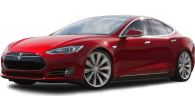
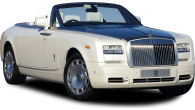


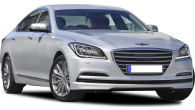


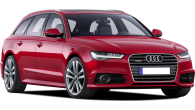
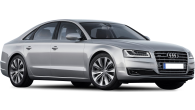
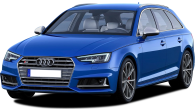








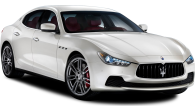

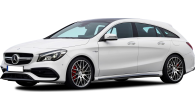

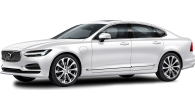

.png)













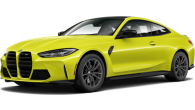




.jpg)



